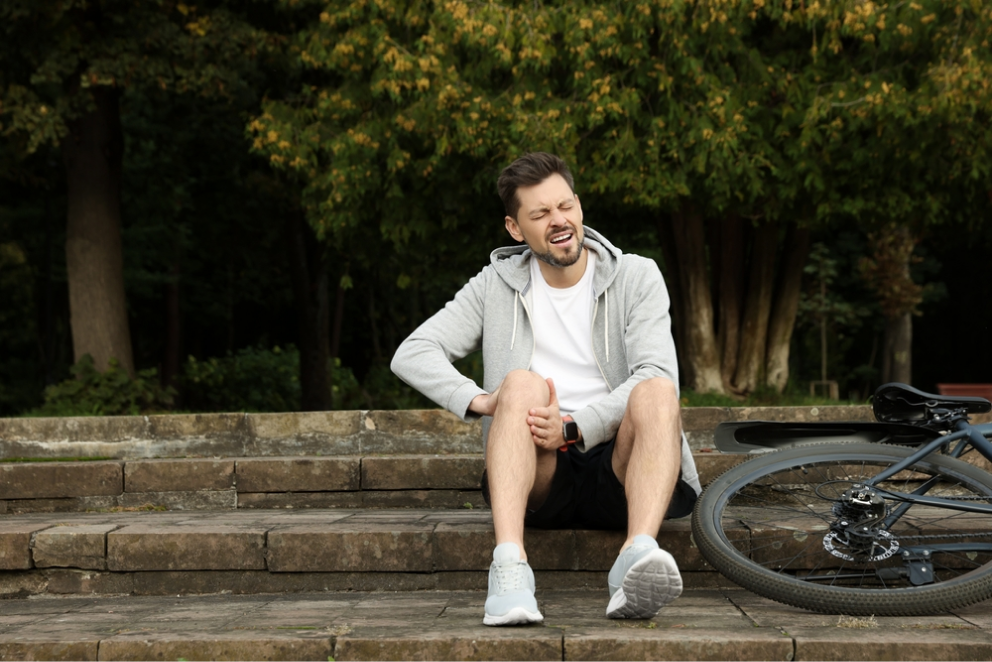

Home Services Public Liability Slips & Falls The importance of photographs for claiming compensation
The importance of photographs for claiming compensation
The importance of photographs for claiming compensation
The old adage “a picture is worth a thousand words” is particularly pertinent for photos that depict the location where you have suffered an injury when claiming compensation through public liability.
Injuries in public spaces can happen when we least expect it: some of the most common types of claims we see include slips, trips and falls in commercial, retail or public spots. In addition, sports injuries, injuries on the water, playground accidents and assaults can also have grounds for compensation. While snapping a picture of your surrounds may not be front of mind, taking photographs can greatly assist in substantiating the harm you experienced as a result.
A quick-thinking photo was integral to Jenny’s case.
At a bus stop, Jenny stepped off a bus and felt her ankle crunch beneath her, with the excruciating pain quickly rushing over her. The section of the footpath at the bus stop was cracked and uneven, and her ankle had buckled upon stepping off the bus and into the grooves of the cracks. Having fallen to the ground, and as a number of onlookers rushed to her aid, Jenny immediately saw the offending broken concrete and thought to take a photo it, and a photo of her rapidly swelling foot. A friend of hers had once slipped on a small pool of water in a shopping centre bathroom, and had passed on to Jenny that she wished she had taken a photo of the bathroom where she had fallen as it was proving difficult to prove her case. From hospital awaiting some scans, Jenny then also rang the local council to notify them of the incident, as she was concerned that a similar accident might happen to someone else disembarking at the same bus stop.
Jenny had x-rays on her ankle, which showed multiple and severe fractures. She required surgery and months of rest and rehabilitation, not to mention that she was unable to return to her professional duties as an emergency ward nurse for 6 months while she recovered.
Jenny decided to consult a lawyer a few weeks after the accident, as she wanted some advice on whether she could claim some compensation. She was concerned about the escalating medical expenses now and into the future, and the time spent off work. The lawyer asked Jenny where exactly the accident happened and whether she had taken any photos – to which Jenny was thankful that she had! For good measure, Jenny returned to the bus stop a few weeks later to take more photos of the surrounds – and sure enough, a fresh slab of concrete was now sitting flush with the rest of the footpath, and all traces of the offending broken concrete had disappeared.
Jenny’s quick thinking in taking the photo at the time of the incident meant that there was evidence of exactly what had caused her fractured ankle. She now also had evidence that the council finally did something about the offending concrete. Not only did this photo capture the broken concrete, the surroundings, the weather and the visibility at the time, but it was valuable evidence of what actually existed when she suffered her injury and was therefore valuable support in making her compensation claim.
It is completely understandable if not everyone is as quick thinking as Jenny, and it is not always possible to get a photo of your location directly after your injury occurs. You should however attempt to return to the exact location where you sustained your injury as soon as possible and take photographs or even a video. If for some reason you cannot gain access to the location, as it has been cornered off or there are workers on the site, make note of who refused you entry, the date, and what was being done at the site when you returned.
As well as photographs of the area where the accident occurred, you should also input the location of where the accident occurred into Google Maps, print off a screenshot (including the surrounding streets for context) and mark the exact location with an X. For any photographs it is also critical that you mark the date and time that you took the record (e.g.: on the back of the photo) so that any changes to the site which may eventuate after your injury occurred will not affect your claim for compensation.
Like Jenny, you should also take photographs of your injury at the time of the accident, and at various stages of your recovery, to demonstrate the seriousness of the injury and its impact on your day-to-day life.
Gordon Legal are the team of legal experts specialising in compensation law and helping individuals to claim what they need to rest and recover from an injury they have sustained in a public place. Our decades of experience in this field has ensured our reputation for excellence and we are here to help you understand your rights and entitlements concerning compensation claims for personal injuries.
For more information or to speak with a solicitor about your slip or fall, contact us on 1800 21 22 23.

No win, no fee
Help when you need it most without the added stress of upfront legal fees engaging a
no win, no fee lawyer. When you need legal help, understandably, the first thing people often think is ‘can I afford it?’ To address this, our Senior Partner, Peter Gordon and Partner, Paul Henderson pioneered the ‘no win, no fee’ system to create greater access to the legal system.
CONTACT US
Get in touch
We are here to help
When you’re ready, give us a call or click on the button below to send us a message. It will go straight to a caring and committed member of our team who will contact you within 24 hours.
